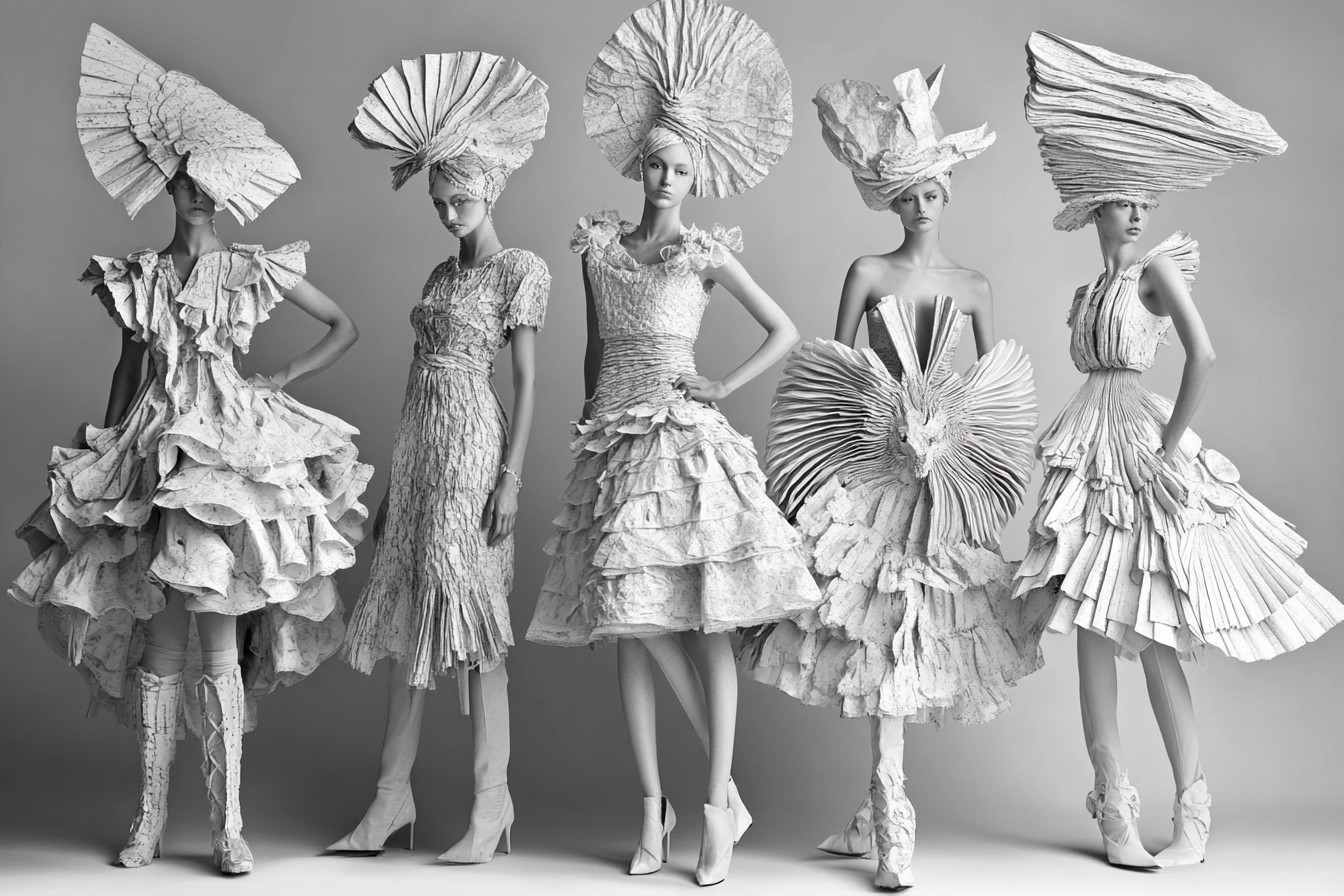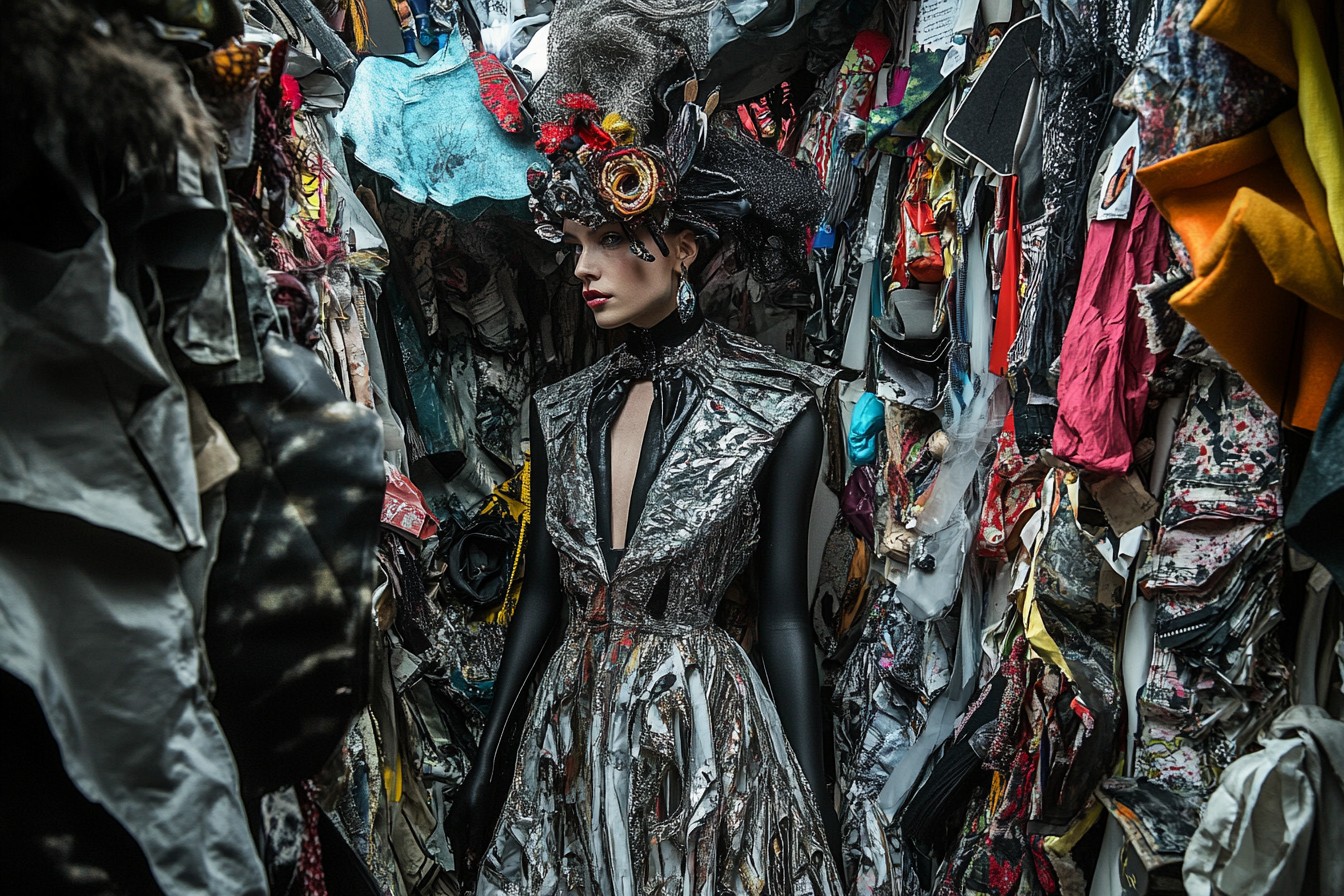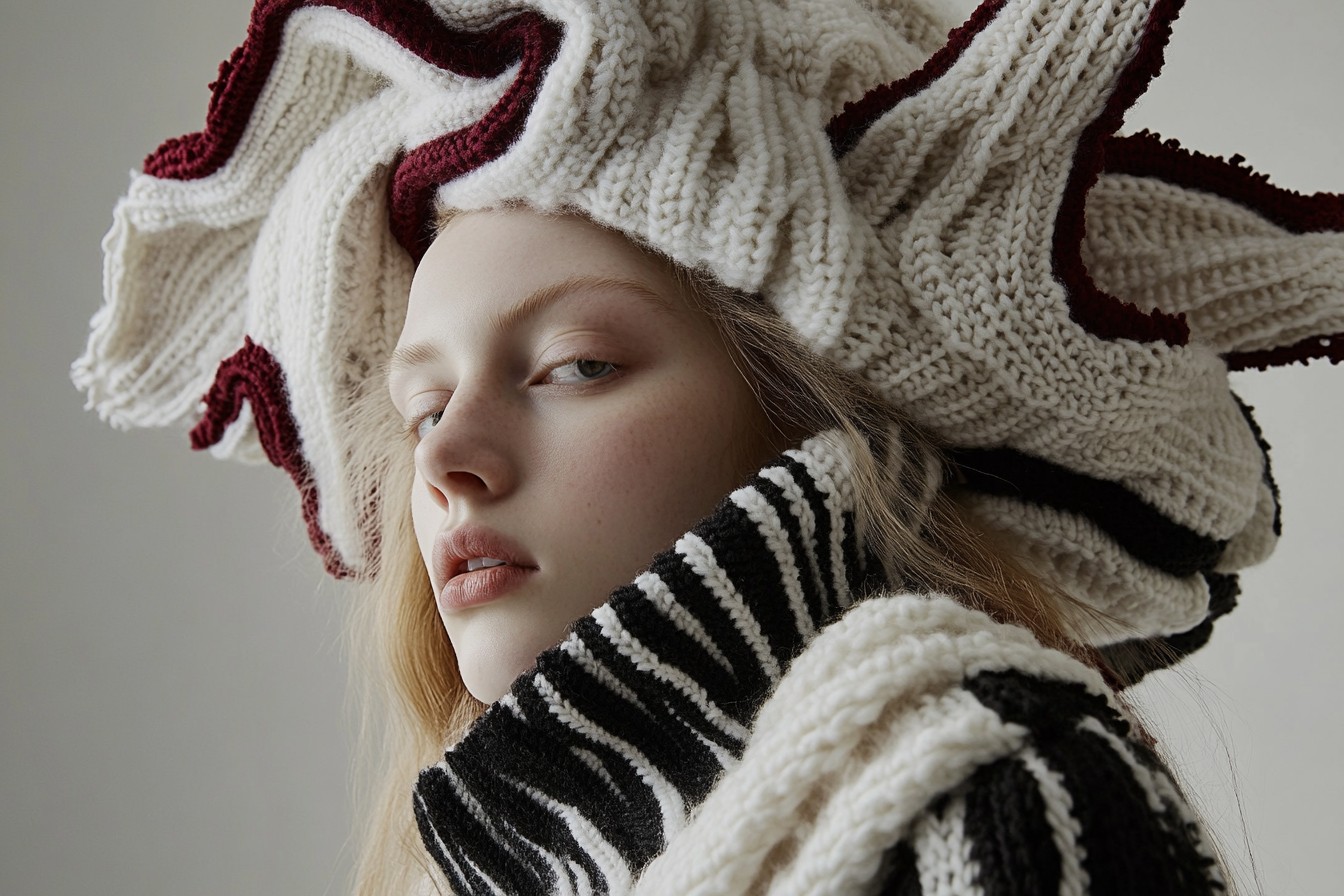Let me share something I haven’t told anyone besides my accountant and my most non-judgmental friend: I haven’t bought a new designer item in eight months. For someone who’s spent the past decade attending fashion weeks and building a career on having opinions about clothes, this feels like a confession that should be whispered in a darkened room. My Instagram followers would be shocked—if Instagram still existed and wasn’t just a graveyard of abandoned Reels and sponsored content for teeth whitening.

I’m not alone in this fashion austerity, though. The cost of living crisis has changed our relationship with clothes in ways both obvious and subtle, creating new shopping patterns that would have been unthinkable three years ago. The British fashion landscape has shifted seismically, and I’ve spent the past three months talking to women across the country about how they’re adapting. Some of what I found surprised even me, a person who genuinely believed she had seen every possible approach to building a wardrobe.
“I have a clothes buying ban until June,” declared Priya, 34, a marketing executive from Manchester I interviewed over coffee that she brought in a thermos because “£4.50 for a latte is basically setting money on fire now.” Previously a reliable two-new-outfits-a-month shopper, she’s now operating on what she calls a “fashion famine” while she saves for a house deposit that keeps slipping further away as interest rates play their cruel games. “I’ve got a wedding in May and I’m already having anxiety dreams about what to wear, because buying something new isn’t an option.”
Priya’s strategy has become increasingly common: the total shopping freeze. Women who previously shopped as both hobby and emotional regulation are going cold turkey, putting themselves on buying bans that range from one month to a full year. My friend Eliza, a solicitor who used to mark each successful case with a new pair of shoes (“cheaper than therapy” was her justification), hasn’t bought clothes in four months. “I’m learning to celebrate with bubble baths instead,” she told me, not entirely convincingly.

What’s particularly interesting is how these shopping bans have created new social dynamics. Groups of friends are forming what amount to shopping support groups, meeting for clothes swap parties instead of retail therapy sessions. Last month, I attended one in a small flat in Clapham where eight women (combined annual salary: enough to normally support several mid-range fashion retailers) traded everything from Zara tops to a barely-worn Ganni dress that caused a brief but intense friendship rift. Wine flowed, clothes were exchanged, and exactly zero pounds were spent on new items.
“It’s better than shopping in some ways,” explained the host, Nadine, carefully folding a newly-acquired silk blouse. “You get the thrill of something new, but also the story behind it. Emma bought this for her ex’s birthday dinner, but now it’s mine and I’ll wear it for better occasions.” There’s something beautifully communal about it—fashion as a shared resource rather than an individual pursuit.
For those not ready for a complete shopping ban, there’s been a dramatic shift in where money gets spent. The idea of “investment pieces” isn’t new, but the definition has changed. It’s no longer about splurging on a designer handbag; it’s about the ruthless calculation of cost-per-wear and longevity.

“I bought one pair of £200 boots this winter instead of my usual three pairs from the high street,” explained Lorna, 42, a teacher from Edinburgh who I connected with through a money-saving forum. “I worked it out—the expensive ones will last at least five years with care, while I’d be replacing the cheap ones annually. It’s actually cheaper to buy expensive now, which feels counterintuitive when your energy bill has tripled.”
This mathematical approach to fashion has created what retailers call “barbell shopping”—spending at the extreme ends (basics or true investment pieces) while abandoning the middle ground. The casualties here are mid-priced brands that aren’t quite cheap enough for the budget-conscious but don’t offer the quality to justify higher prices. Walking through any shopping center, you can see the evidence: Zara and Primark heaving with customers while mid-range stores stand eerily quiet, staffed by increasingly anxious-looking sales assistants straightening already perfect displays.
The resale market has exploded, though not quite in the way fashion optimists predicted a few years ago. Yes, platforms like Vinted and Depop are seeing record numbers, but for every heartwarming story about circular fashion, there are dozens that reveal the harsher reality. People aren’t primarily selling clothes they’ve fallen out of love with—they’re selling because they need the money.

“I’m selling clothes to pay for food shops,” admitted Carla, 29, a dental receptionist from Leeds with two young children. We spoke while she photographed a pile of dresses against a white bedsheet—her makeshift product photography studio. “Last month I sold my favorite AllSaints leather jacket that I’d saved for ages to buy. Got £87 for it, which covered the weekly shop and school shoes for my daughter.” Her matter-of-fact tone couldn’t quite hide the emotion when she showed me the jacket’s listing, already marked ‘Sold’.
For others, the secondhand market isn’t about financial necessity but a philosophical shift. “I haven’t bought new clothes in two years,” said Mariam, a sustainability consultant who was wearing a vintage Jaeger suit that looked better than anything currently in shops. “Between charity shops, vintage stores, and online resale, I’ve built a wardrobe that’s more interesting than when I bought new, and it costs less financially and environmentally.”
Charity shops themselves have undergone a transformation. Once the somewhat musty domain of retirees and students, they’re now fashion destinations with their own micro-trends and devoted followers. The charity shop in Chiswick I visited had a waiting list for volunteering positions (“better than gold dust,” the manager assured me) and a WhatsApp alert system for regular customers when good donations arrived.

This has created a strange new landscape where a Hampstead charity shop might price a second-hand Arket jumper higher than it cost new because of demand, while the local outlet of the same high-street brand struggles to shift identical items at full price. Fashion retail has always been psychological as much as practical, but these contradictions reveal just how complex our relationship with clothes has become.
The ritual of shopping itself has changed too. Gone are the casual Saturday browsing sessions that inevitably resulted in an unplanned purchase. Shopping now is strategic, planned, and increasingly digital—though not in the way retailers hoped.
“I have a seven-step process before buying anything,” explained Tasha, 37, a project manager who was previously a self-described “ASOS addict” ordering packages several times a week. She walked me through her new approach: items go on a wishlist, she sets a 30-day cooling off period, searches for it secondhand, checks for upcoming sales, looks for discount codes, calculates a cost-per-wear estimate, and finally asks herself if she can afford it without using credit. “It means I buy about 90% less than I used to, but what I do buy I actually want and use.”

Online shopping itself has shifted from casual browsing to intensive research sessions. Women describe spending hours not just finding items but hunting down every possible discount. Browser extensions that track price histories and alert to drops have become essential tools. The joy of spontaneous purchasing has been replaced by the satisfaction of gaming the system—finding the cheapest possible way to get exactly what you want.
“I feel genuinely proud when I manage to stack a student discount code with a newsletter sign-up bonus and free delivery,” said Yasmin, 26, a PhD student from Cardiff whose knowledge of retail discount structures is probably worthy of its own thesis. “It’s like beating the final boss in a video game.”
Social media’s influence has evolved too. While Instagram and TikTok still drive trend awareness, there’s been a noticeable pushback against the culture of constant consumption they promote. The comments sections under influencer shopping hauls have become increasingly hostile, with followers questioning both the ethics and financials of excessive buying.

“I unfollowed anyone who made me feel like I needed new things,” admitted Hannah, 33, a nurse from Birmingham who estimated she’d previously spent over £3,000 a year on influencer-recommended products. “Now I only follow accounts about styling what you already have or shopping your wardrobe. My bank balance and mental health are both better for it.”
This shift has created a new type of fashion content creator—the “non-shopping influencer” who builds engagement through outfit repeating, creative restyling, and championing what they already own. Some of the smartest mainstream influencers have pivoted accordingly, replacing “swipe up to buy” with tutorials on alterations or styling one dress five ways.
The most profound change, though, might be in how we view clothes themselves. After decades of treating fashion as disposable entertainment, there’s a return to viewing clothing as valuable assets to be maintained and cared for. Repair shops report business booming, while sewing machine sales have increased by 30% year on year. YouTube tutorials on darning, patching, and basic alterations rack up millions of views.

“I spent £45 getting a coat relined that I would have previously just replaced,” said Olivia, 41, an office manager from Bristol. “My mother would find it hilarious—she was always telling me to take care of my things, and I ignored her for years. Now I’m Google-searching how to remove pills from jumpers at midnight.”
The fashion industry itself is responding, albeit slowly and sometimes reluctantly. Repair services from brands have expanded, with even fast fashion retailers like H&M offering mending in some locations. Rental has grown too, though it remains more popular for special occasions than everyday wear. What’s most telling is how marketing language has shifted—durability and versatility now feature as prominently as trend references in product descriptions.
As for me? My own shopping habits have transformed in ways my fashion editor past self would find shocking. My last six clothing “acquisitions” include: a cashmere jumper inherited when my friend moved abroad (free), a silk blouse from a clothes swap (free), a pair of jeans bought secondhand on Vinted (£28), a dress altered by a local seamstress to fit better (£37 for alterations to a dress I already owned), woolen socks knitted by my mother (free but emotionally priceless), and yes, one new item—a coat bought in the sale with a press discount (still expensive, but calculated to cost around 30p per wear over the next decade if I take care of it).
Is this permanent, or just a temporary adaptation to economic pressure? The industry is betting—hoping—it’s the latter. But from the conversations I’ve had across the country, something more fundamental has shifted. Women talk about their pre-crisis shopping habits with a mixture of nostalgia and embarrassment, like recalling a wild phase they’ve outgrown.
“I can’t imagine going back to how I used to shop, even if money wasn’t tight,” reflected Sam, 35, an accountant from Glasgow and former “shopping addict” by her own description. “It feels childish now, buying things just for the momentary high. I like that everything I own now has a purpose or a story.”
Perhaps that’s the silver lining to this particularly difficult cloud. In being forced to reconsider our relationship with fashion, many of us have developed a more meaningful connection to what we wear. The cost of living crisis has been brutal in countless ways, but in pushing us to value, maintain, share, and thoughtfully select our clothes, it might just have inadvertently created a healthier fashion culture than the one it disrupted.



